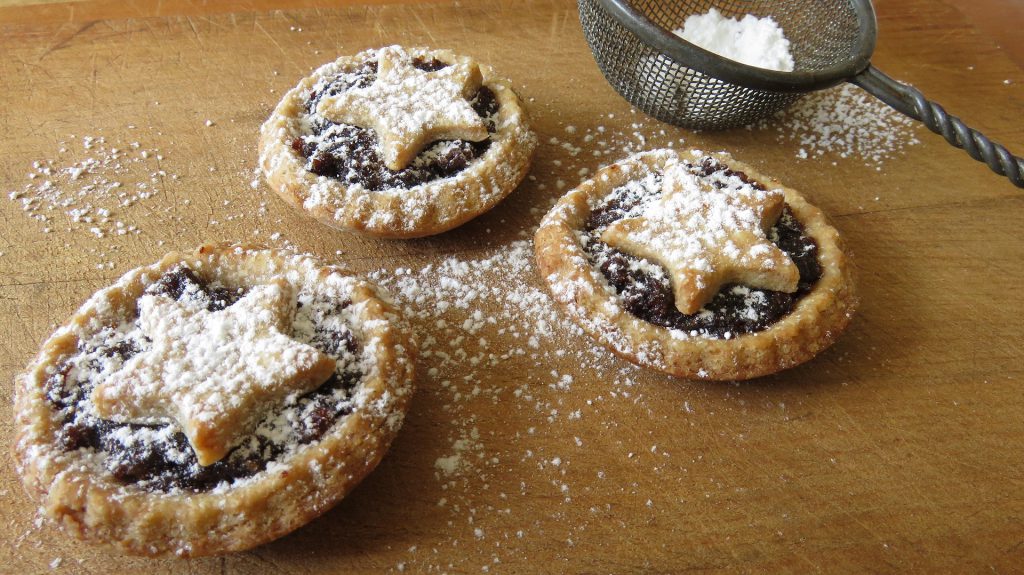
It is possible that the Christmas Mince Pie dates back to the 11th Century and the Crusaders. On their return from the Holy Land they brought back with them oriental spices, three of which cinnamon, cloves and nutmeg were added to their pies. These three species symbolised the Magi, the Three Wise Men. Unlike today the pies were oblong another symbol, that of the cradle of Christ. The ingredients at this stage were likely to have been meat and possibly eaten before the Epiphany.
Medieval Christmas Mince Pies
During the rest of the Medieval era, the contents would have been chopped liver or meat (various meats could have been used partridge, pigeon, hare, rabbits and even lambs tongue), ginger, boiled eggs and dried fruit. It was possibly fried and then baked. Some scholars claim it was called the Christmas Pie or Chewette.
It was indeed a very popular dish, Henry V of England had it at his 1413 coronation. Henry VIII of England had it as his main Christmas pie dish.
During the Puritans they were banned and became know as the shred or secret pies. When they were re-introduced their size had reduced, similar to the modern mince pie and were then known as Wayfarer Pies.
Modern Mince Pies
The modern mince pie has lost its meat origins and is instead filled with fruit mincemeat which is now traditionally made up of raisins, cherries, candied peels, apricots and currants. To this spices like nutmeg or cinnamon are added and alcohol with sugar.
As with other foods at Christmas some traditions have become associated with the mince pie.
For children to leave one out before they go to bed on Christmas Eve for Father Christmas.
It is a tradition to make a wish when you eat your first mince pie of the Christmas season.
Always eat it in silence.
For good luck eat one mince pie for each day of the 12 days of Christmas.
Many mince pies have a star on it to symbolise the star that led the Magi to Jesus.